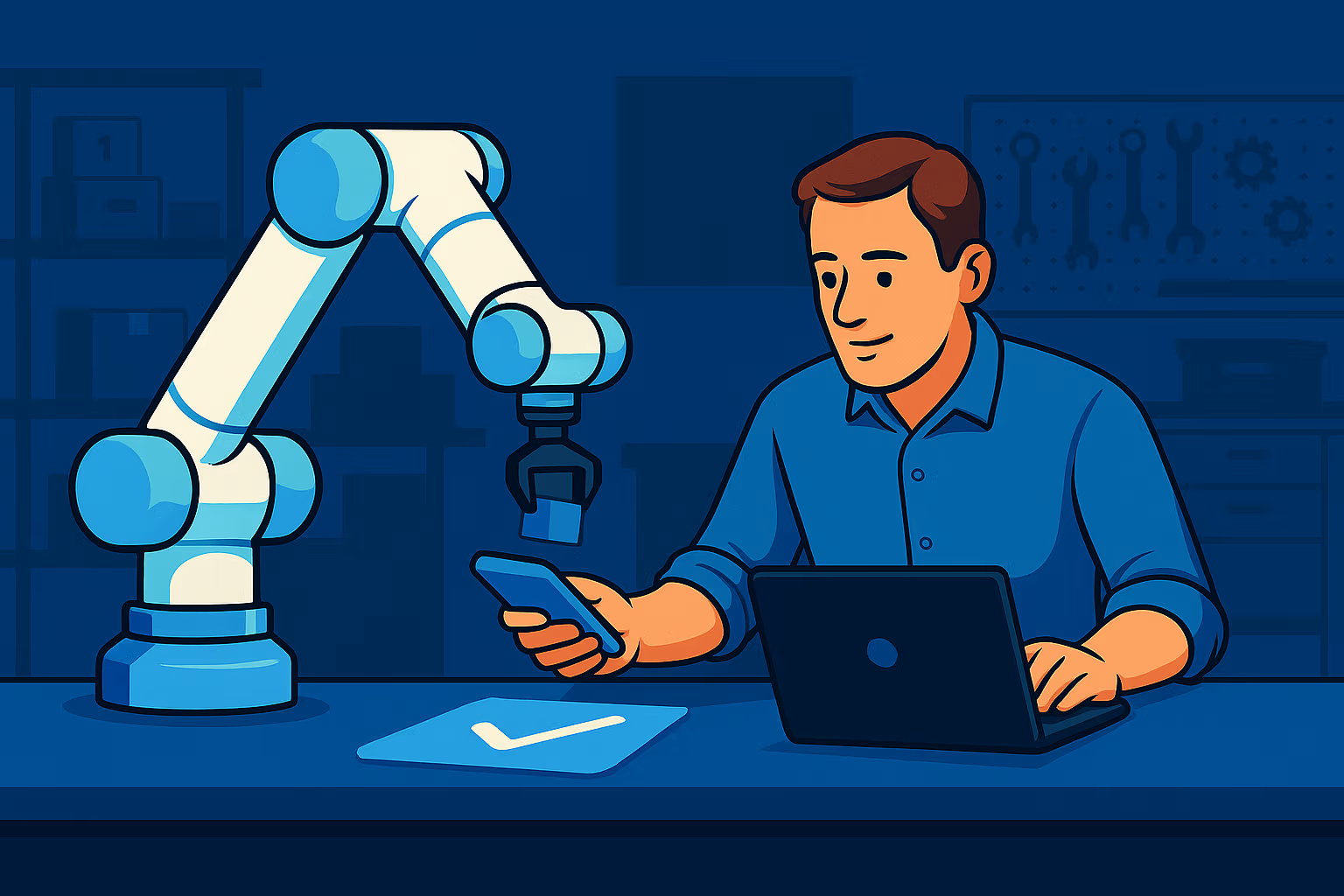The Rise of Cobots: When Collaboration Meets Automation
Human history has always been a dialogue between tools and their creators. Every machine invented has reshaped what it means to work, to think, and to create value. The arrival of collaborative robots, or cobots, extends this dialogue into new territory. Unlike their industrial predecessors, cobots are not built to replace human labor but to share it. They are designed to stand beside workers, not behind safety cages, and to learn from observation rather than instruction.
This evolution transforms the very idea of collaboration. When a machine anticipates movement, adjusts to human rhythm, and completes a task with apparent awareness, the boundary between assistance and autonomy begins to blur. Cobots represent an era where intelligence no longer sits solely in human minds but circulates across systems that observe, respond, and adapt.
The question that follows is both simple and unsettling: as machines grow more cooperative, do humans grow more indispensable or more replaceable?
Efficiency or Elimination: The New Productivity Dilemma

Cobots were introduced as a solution to the limits of human endurance and precision. They lift heavier loads, repeat intricate tasks flawlessly, and never tire. For businesses, the promise is irresistible: continuous productivity, reduced error, and measurable gains in efficiency. Yet behind this technological progress lies an unresolved tension about what efficiency truly costs.
When cobots take over repetitive work, they free employees to focus on creativity and problem-solving. In theory, this enhances the quality of human contribution. In practice, however, many workers experience anxiety about being left behind. The same automation that creates opportunity can also compress the need for human labor. Entire workflows evolve around the machine’s capabilities rather than human strengths.
The productivity gains that excite corporate leaders can simultaneously erode the stability of the workforce. As factories, logistics centers, and even hospitals integrate cobots, the distinction between help and replacement narrows. Efficiency becomes both a triumph and a threat, a measure of progress that quietly redefines the value of human participation.
Human Purpose in a Mechanized Workplace
Working alongside cobots alters more than the rhythm of production; it reshapes the identity of work itself. When a machine anticipates movement, measures precision, and executes without hesitation, humans begin to question their own place in the process. The traditional satisfaction of mastery gives way to coordination, where success is defined by how well one synchronizes with technology rather than outperforms it.
This shift can either empower or diminish. Some workers describe cobots as collaborators that remove the physical burden and elevate their focus toward creativity and strategy. Others feel displaced from the very essence of their craft, watching as the tactile connection to labor dissolves into screens, data streams, and sensors. The pride of doing becomes the management of doing.
The deeper issue is psychological. Meaning at work has always come from effort, skill, and shared accomplishment. When machines absorb much of that effort, the emotional link between human purpose and human labor weakens. The workplace of tomorrow may not lack employment, but it may struggle to sustain fulfillment.
Leadership and Responsibility: Who Benefits from Cobotic Progress?

The integration of cobots into the workplace is not just a technological decision; it is a moral and strategic one. Leaders face a defining challenge: how to balance efficiency with equity. When productivity increases through automation, organizations must decide whether the benefits are distributed fairly or concentrated at the top.
For many executives, cobots represent a competitive advantage. They reduce costs, ensure consistency, and position companies ahead in a race shaped by global pressure. Yet leadership cannot be measured solely by profitability. True innovation demands foresight and responsibility. Decisions about automation affect livelihoods, identity, and the social contract between employer and employee.
Forward-thinking leaders are beginning to frame cobotic adoption as a partnership model rather than a replacement strategy. They invest in retraining, redesign workflows, and emphasize collaboration over substitution. By doing so, they preserve trust while harnessing the advantages of automation. The most sustainable organizations will be those that see technology not as a shortcut to efficiency but as a shared resource that amplifies human potential. The question is no longer whether cobots can work, but whether leadership can evolve fast enough to ensure they work for everyone.
The Future of Work: Co-Creation, Not Competition
The relationship between humans and cobots is moving beyond efficiency toward creativity. In research labs, design studios, and advanced factories, cobots already assist in processes that require adaptability and intuition. They analyze data, adjust movements, and collaborate in real time with human partners who provide judgment and context. This merging of mechanical precision with human insight defines the next frontier of work.
The future depends on how this collaboration is framed. If cobots are treated as competitors, the workplace becomes a zero-sum environment where one side’s progress signals the other’s decline. But when framed as co-creators, cobots become instruments that extend human capability rather than replace it. The value shifts from individual performance to the synergy of human and machine working in harmony.
Education and policy will play a decisive role in this transformation. Workers need new skills in systems thinking, digital communication, and adaptive learning to thrive in shared environments. The companies that cultivate these capabilities will not only innovate faster but also redefine productivity itself as a collaborative process.
Beyond Automation: Redefining What It Means to Work Together

The age of cobots represents more than another industrial revolution. It signals a deeper reconfiguration of how humans understand work, value, and partnership. Machines that once replaced human effort now collaborate with it, forcing society to reconsider the boundary between tool and teammate.
The success of this new era will depend on whether collaboration can remain human-centered. Technology should enhance dignity, not diminish it. Progress will have meaning only if innovation leads to shared prosperity rather than silent displacement.
The measure of tomorrow’s workforce will not be how many machines it commands, but how intelligently it integrates them into a system of mutual growth. Working together with cobots may ultimately teach humanity a lesson about itself: that collaboration is not defined by who leads, but by how creation is shared.
How secure are H-in-Q’s solutions?
All tools are GDPR-aligned, privacy-first, and built with encrypted pipelines.
Do you build custom AI models?
Yes. We fine-tune models (NLP, prediction, segmentation) for each client’s vertical.
Can clients access dashboards directly?
Absolutely. All outputs are dashboard-ready and integrate with BI tools like Power BI or Tableau.
What languages are supported?
Our solutions engage in 45+ languages with automatic detection and semantic consistency.
How fast can we deploy a solution?
Most go live within days thanks to plug-and-play connectors and modular architecture.
What happens to client data?
Data stays secure, used only for model training and processing, with full transparency and client control.
Read also: Green Manufacturing in Industry 4.0: Sustainable Future or Selling Empty Promises?
References
- The Rise of Collaborative Robots: How Cobots Are Reshaping the Future of Industrial Work
- Benefits of Collaborative Robots/Cobots!
- How collaborative robots’ flexibility benefits manufacturers



